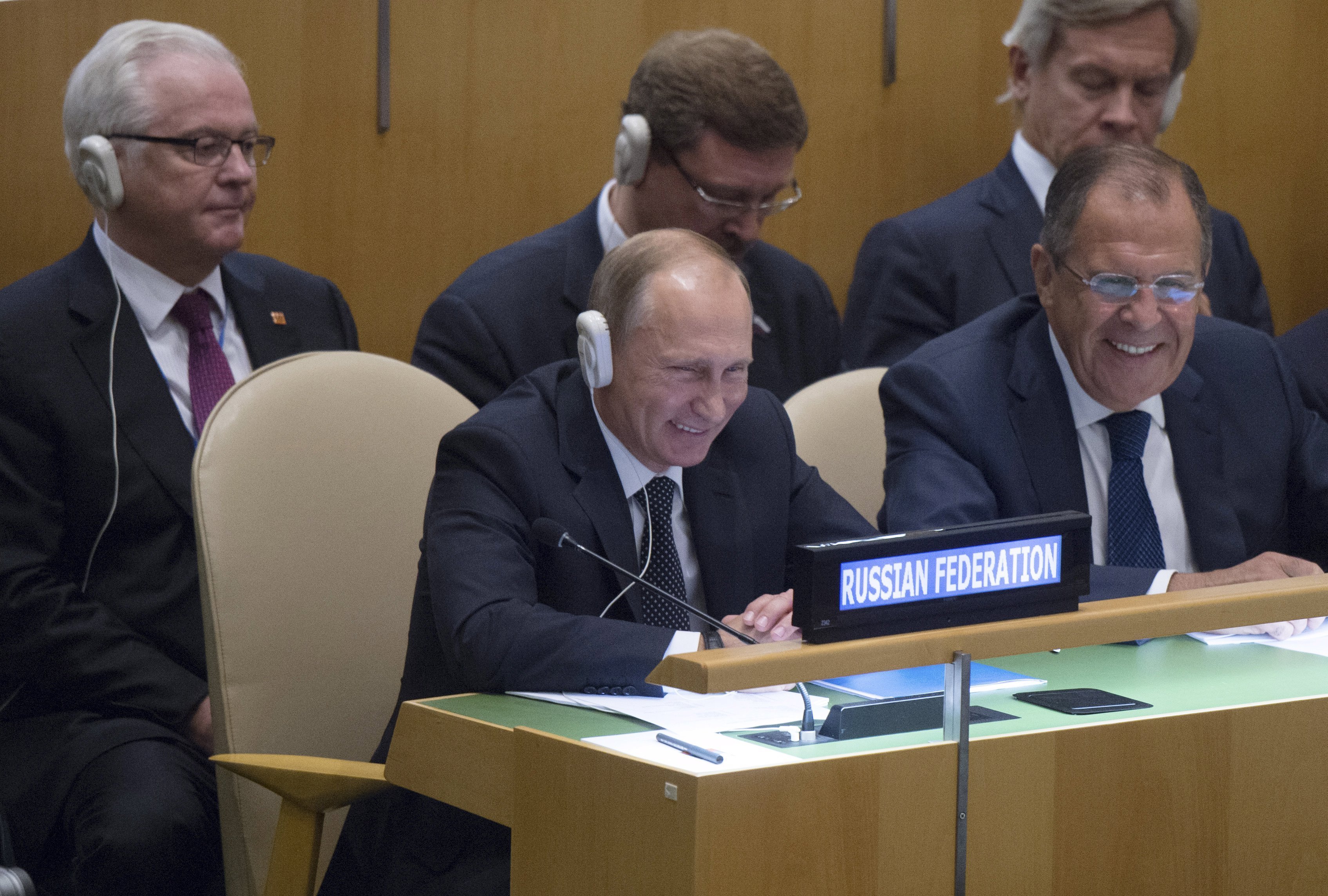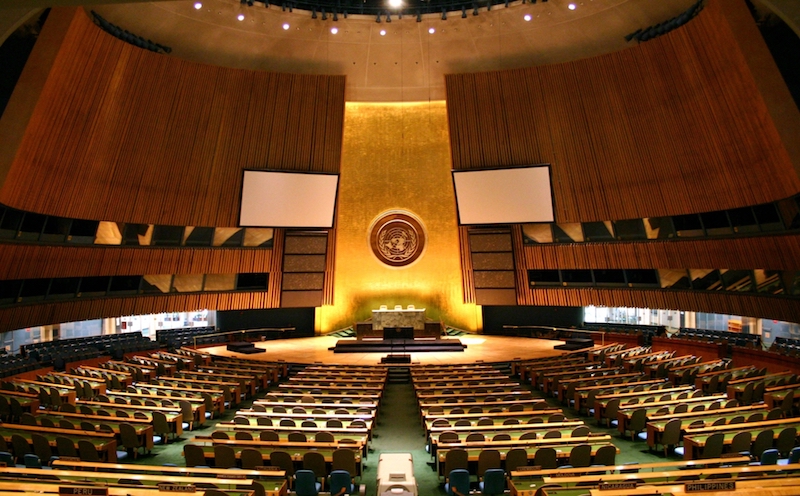Below are photos, as well as an accompanying descriptions from an exhibit that was organized by Canadians for Democracy in Russia with the support of Euromaidan Canada Committee. In opposition to the war in Ukraine, the exhibit aims to reveal evidence of Russian support for anti-government militants, as well demonstrate the brutal and violent nature of the conflict (for more information, please visit http://thewarinukraine.info).
In this week’s post, we bring forth the largely ineffective 2014 Minsk Agreement I as well as Putin’s high-level perspective about the Ukrainian conflict given during the UN General Assembly in 2015.
The Minsk Agreement I

On September 5, 2014, after continuous talks, the representatives of Ukraine, Russia and the Russia-backed militants signed a ceasefire protocol at Minsk, Belarus. However, this did not affect the course of the war, as the Russia-backed militants continued their attacks in violation of the ceasefire. It only facilitated the process of prisoner exchange to some extent.

Below are the 12 points of the Minsk Agreement:
- To ensure an immediate bilateral ceasefire
- To ensure the monitoring and verification of the ceasefire by the OSCE
- Decentralization of power, including through the adoption of the Ukrainian law “On temporary Order of Local Self-Governance in Particular Districts of Donetsk and Luhansk Oblasts”
- To ensure the permanent monitoring of the Ukrainian-Russian border and verification by the OSCE with the creation of security zones in the border regions of Ukraine and the Russian Federation
- Immediate release of all hostages and illegally detained persons
- A law preventing the prosecution and punishment of persons in connection with the events that have taken place in some areas of Donetsk and Luhansk Oblasts
- To continue the inclusive national dialogue
- To take measures to improve the humanitarian situation in Donbass
- To ensure early local elections in accordance with the Ukrainian law “On temporary Order of Local Self-Governance in Particular Districts of Donetsk and Luhansk Oblasts”
- To withdraw illegal armed groups and military equipment as well as fighters and mercenaries from Ukraine
- To adopt a program of economic recovery and reconstruction for the Donbass region
- To provide personal security for participants in the consultations
Putin at the UN General Assembly

On September 28, 2015, the 70th session of the UN General Assembly took place. In his speech, Valdimir Putin accused the NATO countries of staging the revolution in Ukraine and termed the war in Donbass a “civil war”, once more implying the official Kremlin’s position, that there are no Russian troops and no Russian involvement in Ukraine:
First, they continue their policy of expanding NATO. What for? If the Warsaw Bloc stopped its existence, the Soviet Union have collapsed (ph) and, nevertheless, the NATO continues expanding as well as its military infrastructure. Then they offered the poor Soviet countries a false choice: either to be with the West or with the East. Sooner or later, this logic of confrontation was bound to spark off a grave geopolitical crisis. This is exactly what happened in Ukraine, where the discontent of population with the current authorities was used and the military coup was orchestrated from outside — that triggered a civil war as a result.
Putin has also expressed his support for Syria’s autocratic leader Bashar al-Assad, and said that the West is making an “enormous mistake to refuse to cooperate with the Syrian government and its armed forces.” Immediately after the UN session, on September 30, 2015, upon Putin’s request, the Russian parliament (the Federation Council) issued a permission to deploy Russian Armed Forces outside of the country. The same day, the Russian Air Force began its airstrikes in Syria. Within the following days, multiple reports, including by NATO, have emerged, claiming there is a ground operation of the Russian Armed Forces in Syria taking place as well.
Despite the war on terrorism and ISIS in the Middle East, Russia is essential in ending the violence and bringing peace to the region. Putin’s involvement on the side of al-Assad, and without any cooperation with the international coalition leading the fight against ISIS in Syria, poses a serious threat of expanding and creating new hostilities. Russia’s use of airspace over Syria without cooperation with the air forces of other countries can result in unpredictable and dangerous conflicts. On October 3 and 4 2015, Russian military aircrafts (SU-30 and SU-24) violated Turkish airspace, one of which locked its targeting radar on Turkish jet fighters for several minutes, which resulted in a major international outcry.
Moreover, according to the NATO intelligence and that of other countries, 90% of Russia’s airstrikes are targeting neither ISIS nor the radical rebel positions, but those of the Syrian moderate opposition. Hence, it is not clear if Putin’s involvement in Syria is for the purpose of fighting terrorism, or supporting the autocratic government of Bashar al-Assad.
Disclaimer: Any views or opinions expressed in articles are solely those of the authors and do not necessarily represent the views of the NATO Association of Canada.




